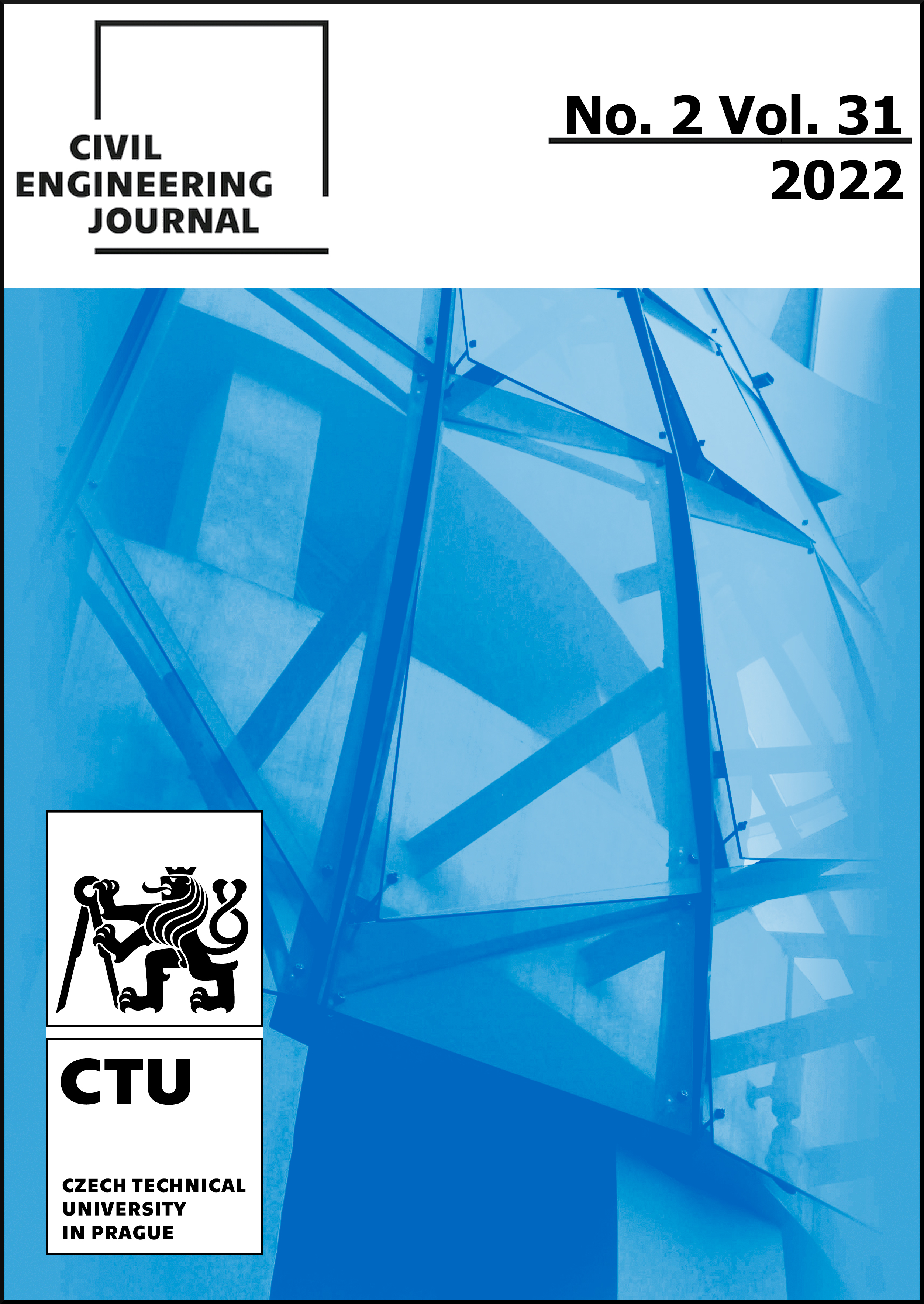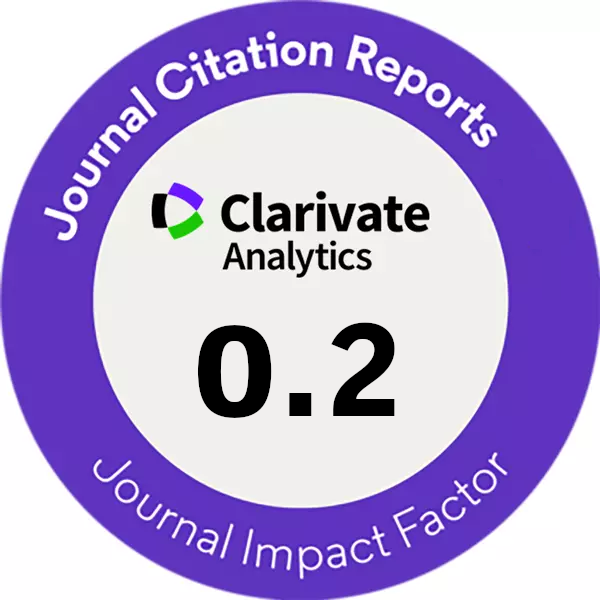THERMAL PERFORMANCE ASSESSMENT OF WALL ASSEMBLIES: CRITERIA IMPORTANCE THEORY AND AHP APPROACH
DOI:
https://doi.org/10.14311/CEJ.2022.02.0018Keywords:
Thermal performance, Multi-criteria assessment, Subjective method, Multi-layered wall assemblyAbstract
The problem of the “best” choice in terms of the ecological, durable, cheap and energy-effective material of envelope construction has been considered in the paper. For the numerical assessment of the thermal performance, the MCDA techniques as Analytical Hierarchy Process (AHP) and Criteria Importance Theory (CIT) were used. There were proposed eight types of wall assemblies from a natural material, namely: Hempcrete, Adobe, Strawbale panel, Earthbag, Cordwood, SIP (plywood+ecofiber), Hempcrete+straw and Compositional building thermo-block. As a objective function for the search of the best alternative the integral index was proposed which consist of thermo-physical and economic criteria. As the thermo-physical criteria component of the index were taken the u-value of the envelope W/m2K, the dimensionless decrement factor of the envelope f and the internal areal heat capacity of the envelope k1, kJ/m2K according to ISO 13786:2017. As economic criteria of the integral index, the authors proposed the cost of the wall material Q, UAH/m2 and the mass of the wall m, kg/m2. The analysis of the conducted research has shown, that from the one hand there is no absolute “leader” in the ranking of the wall assemblies according to the proposed criteria and MCDA technique, but from the other hand by comparison of the results, there were revealed that the top three alternatives in both AHP and CIT technique are walls of “B”, “D” and “E” type with different point order, achieved in each MCDA calculation technique.
Downloads
References
. Xiaodong C., Dai X., Junjie L., 2016. Building energy-consumption status worldwide and the state-of-the-art technologies for zero-energy buildings during the past decade. Energy and Buildings, vol. 128: 198-213. https://doi.org/10.1016/j.enbuild.2016.06.089.
. STAZI F., 2017. Thermal inertia in energy-efficient building envelopes. (Butterworth-Heinemann) 367 pp.
. Wang J. J. et al., 2009. Review on multi-criteria decision analysis aid in sustainable energy decision-making. Renewable and Sustainable Energy Reviews, vol. 13: 2263-2278. https://doi.org/10.1016/j.rser.2009.06.021.
. Shimray B. A., Singh K. M., Mehta R. K., 2017. A survey of multi-criteria decision-making technique used in renewable energy planning. International Journal of Computer, vol. 4523: 124-140.
. Kheiri F. 2018. A review on optimization methods applied in energy-efficient building geometry and envelope design. Renewable and Sustainable Energy Reviews, vol. 92: 897-920. https://doi.org/10.1016/j.rser.2018.04.080.
. Arce M. E. et al., 2015. The use of grey-based methods in multi-criteria decision analysis for the evaluation of sustainable energy systems: A review. Renewable and Sustainable Energy Reviews, vol. 47: 924-932. https://doi.org/ 10.1016/j.rser.2015.03.010.
. Saaty Thomas L., 1996. Multicriteria Decision Making: The Analytic Hierarchy Process. (RWS Publications) 479 pp.
. Podinovski V.V., 1976. Multicriterial problems with importance-ordered criteria. Automation and remote control, vol. 37: 1728-1736.
. Podinovski V. V., 1994. Criteria importance theory. Mathematical Social Sciences, vol. 27: 237-252.
. Podinovski V. V., 2019. Ideas and methods of the Criteria Importance Theory in multicriteria decision-making problems (Nauka Moscow) 103 pp. (in Russian).
. Podinovski V. V., 2002. The quantitative importance of criteria for MCDA. Journal of multi-criteria decision analysis, vol. 11: 1-15. https://doi.org/10.1002/mcda.312.
. Nelyubin A. P., Podinovski V.V., 2017. Multicriteria Choice Based on Criteria Importance Methods with Uncertain Preference Information. Computational Mathematics and Mathematical Physics, vol. 57: 1475-1483. https://doi.org/10.1134/S0965542517090093.
. Podinovski V.V., 2009. On the use of importance information in MCDA problems with criteria measured on the first ordered metric scale. Journal of multi-criteria decision analysis, vol. 15: 163-174. https://doi.org/10.1002/mcda.433.
. Nelyubin A. P., Podinovski V.V., 2012. Analytical decision rules using importance ordered criteria with a scale of the first ordinal metric. Automation and Remote Control, vol. 73: 831-840. https://doi.org/10.1134/S0005117912050074.
. Decision Analysis Support System DASS [computer program] Available at: URL http://mcodm.ru/soft/dass/ [Accessed: date 25.02.2021].
. Biks Y., Ratushnyak G., Ratushnyak O., Ryapolov P., 2020. Application of AHP and GRA methods in energy efficiency potential’s assessment of envelopes from natural materials. Theory and building practice, № 2: 48-62. https://doi.org/10.23939/jtbp2020.02.048.
. Biks Y., Ratushnyak G., Ratushnyak O., 2019. Energy performance assessment of envelopes from organic materials. Architecture Civil Engineering Environment, vol. 3: 55-67. https://doi.org/10.21307/ACEE-2019-036.
. A brief guide and free tool for the calculation of the thermal mass of building components, [online]. Available at: URL https://www.htflux.com/en/free-calculation-tool-for-thermal-mass-of-building-components-iso-13786/. [Accessed: date 17.02.2021].
. ISO 13786:2017 Thermal performance of building components – Dynamic thermal characteristics – Calculation methods, [online] Available at: URL https://www.iso.org/standard/65711.html [Accessed: date 16.02.2021].
. Ukrainian National Standard DSTU B.V. 2.6-189:2013, 2014. Methods of choosing insulation material for insulation of buildings (Minregion Kyiv) 46 pp. (in Ukrainian).
. National Building Code DBN V. 2.6-31: 2016, 2017.Thermal insulation of buildings (Ministry of Regional Development, Construction and Housing and Communal Services of Ukraine, Kyiv) 33 pp. (in Ukrainian).
. Biks, Y.S., Ratushnyak G. S., Ratushnyak O. G., Compositional building thermo-block. Ukraine. IPC: E04B 1/00 E04C 2/16 (2006.01). Utility model u201808845. Available at: URL: https://base.uipv.org/searchINV/search.php?action=viewdetails&IdClaim=253299 [Accessed: date 09.05.2021].
. Asdrubali F., D'Alessandro F., Schiavoni S., 2015. "A review of unconventional sustainable building insulation materials". Sustainable Materials and Technologies, vol. 4:1-17. https://doi.org/10.1016/j.susmat.2015.05.002.
. Gan W. et al., 2019. "Energy-Saving Design of Building Envelope Based on Multiparameter Optimization". Mathematical Problems in Engineering, vol. 2019: 1-12. https://doi.org/10.1155/2019/5261869 .
. Hopfe C. J., Augenbroe G. L., Hensen J. L., 2013. Multi-criteria decision making under uncertainty in building performance assessment. Building and environment, № 69: 81-90. https://doi.org/10.1016/j.buildenv.2013.07.019.
Downloads
Published
Issue
Section
License
Copyright (c) 2022 Author

This work is licensed under a Creative Commons Attribution-NonCommercial 4.0 International License.
Authors who publish with this journal agree to the following terms:
- Authors retain copyright and grant the journal right of first publication with the work simultaneously licensed under a Creative Commons Attribution License that allows others to share the work with an acknowledgement of the work's authorship and initial publication in this journal.
- Authors are able to enter into separate, additional contractual arrangements for the non-exclusive distribution of the journal's published version of the work (e.g., post it to an institutional repository or publish it in a book), with an acknowledgement of its initial publication in this journal.
- Authors are permitted and encouraged to post their work online (e.g., in institutional repositories or on their website) prior to and during the submission process, as it can lead to productive exchanges, as well as earlier and greater citation of published work (See The Effect of Open Access).
How to Cite
Accepted 2022-07-03
Published 2022-07-31











